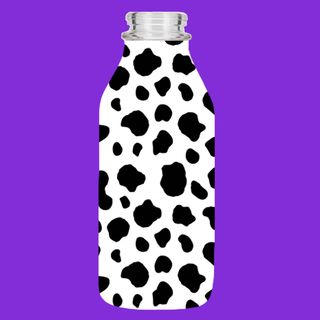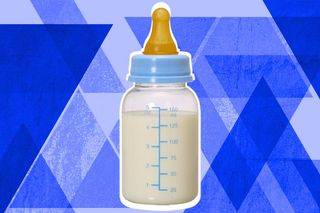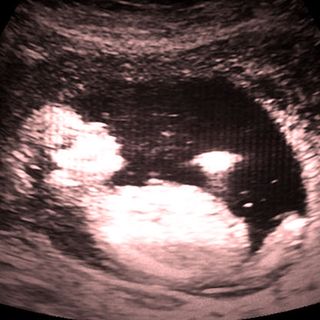
Breast Milk, Formula Create the Same Gut Bacteria in Infants. But the Bacteria Work in Different Ways.
Researchers aren’t sure of the health implications yet.

While there’s no doubt that breast milk is the best source of nourishment for babies, breastfeeding isn’t always feasible for mothers. Which is why formula exists; and over the years, formula makers have gotten closer and closer to creating sustenance that mimics the ingredients and effects of breast milk. Now, formula even fosters the same gut bacteria as breast milk. But new research shows room for improvement: While the gut microbiome of formula-fed infants is more or less the same as that of breastfed infants in terms of composition, the same bacteria end up working in very different ways.
Researchers say the health implications of this specific finding are not yet known. However, the infant microbiome is thought to have many and long-term effects on lifelong health.
Breast milk is rich in protein in the first few days after birth, but then its protein content declines. After that time, the new research suggests, breast milk appears to foster gut bacteria that manufactures the necessary amino acids (the building blocks of protein) babies need to grow, to compensate for the fall-off in protein content. Formula fosters the development of similar gut bacteria — but the flora make very different amino acids.
A similar gut difference emerged in response to human milk sugars, a healthy component of breast milk that provides energy to kids, and the synthetic sugars included in formula.
This was not true for soy-based formula; babies who consumed soy-based formula showed signs of a different, imbalanced collection of gut bacteria. However, researchers aren’t sure whether this is a result of soy-based formula, or the thing that drove parents to try soy-based formula. The same babies had imbalanced, unhealthy microbiomes before they started on soy-based formula.
“The goal of all formulas is to look breast milk-like, and they’re not achieving that,” said the study’s senior author Gautam Dantas, PhD, a professor of pathology and immunology, of biomedical engineering, and of molecular microbiology at Washington University School of Medicine in St. Louis, US. “In terms of which bacteria are there, they look similar, but in terms of what they have the genetic potential to do, it’s not the same. Different doesn’t mean bad, but different does mean different, and we have to understand what the health consequences are.”
Many of these subtle differences appear to play out in the absorption and use of micronutrients, which scientists worry could affect healthy development. While more research is needed, the study authors are hopeful their findings, published in the acclaimed journal Nature Medicine, can be used to develop better formula that produces in babies gut bacteria that is similar, in action as well as content, to breastfed babies’.
“Early infancy is a critical period for neurodevelopment and physiologic development,” said the study’s first author, Dr. Aimee M. Baumann-Dudenhoeffer, an assistant professor of pediatrics at the university. “Many of the synthesis pathways we found to be more abundant in breastfed infants were for vitamins and other developmentally critical nutrients. If we can alter the microbiome, even if the effect is purely temporary, it could still have important positive effects.”
Liesl Goecker is The Swaddle's managing editor.
Related


How You Spend This Holiday Season Will Say A Lot About Your Personality
